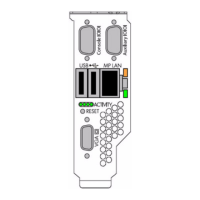Create a bootable USB flash device on a Linux workstation
To create a bootable USB flash device:
1. Insert the USB flash device and determine the name of the device.
2. Format the USB flash device with FAT file system:
mkdosfs -I /dev/sda1
3. Create a directory and mount the USB flash device on this directory:
mkdir –p /mntmount /dev/sda1 /mnt
4. Create the bootable directory for Integrity servers (/efi/boot):
mkdir –p /mnt/efi/boot
5. Copy the boot files from the toolkit tar file to the /mnt/efi/boot directory:
bootia64.efi
elilo.efi
elilo.conf (bootloader options)
rootfs.gz (Linux file system)
linux (Linux kernel)
6. Unmount the USB device.
umount /mnt
Boot from the USB flash device
1. Insert the USB flash device into an Integrity server.
2. From the EFI shell, enter map –r (Figure 4-8) to refresh the USB device discovery. The USB
device should display with a file system.
Figure 4-8 EFI shell Window
3. Enter the EFI Boot Manager menu, and select Boot Configuration (Figure 4-9).
4. Select Add Boot Option to add Removable Media Boot for the USB device.
56 Setting up the boot mechanism

